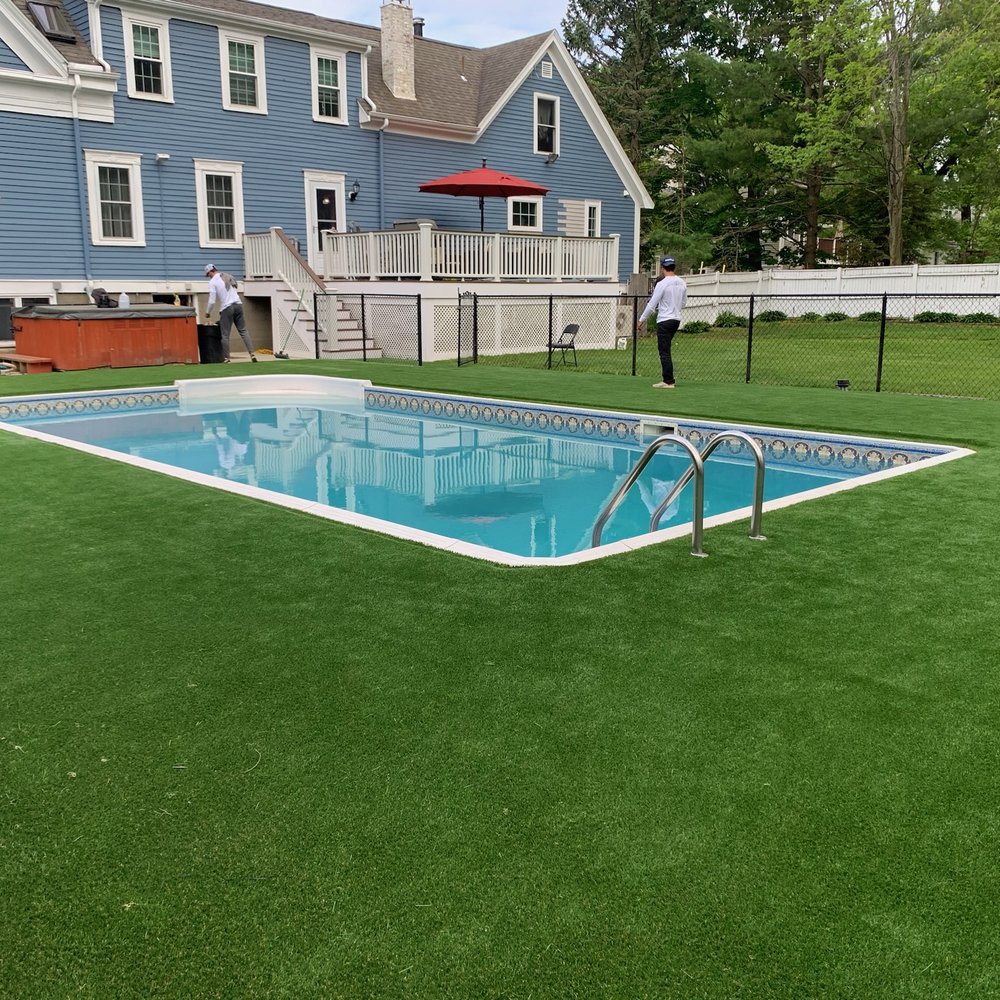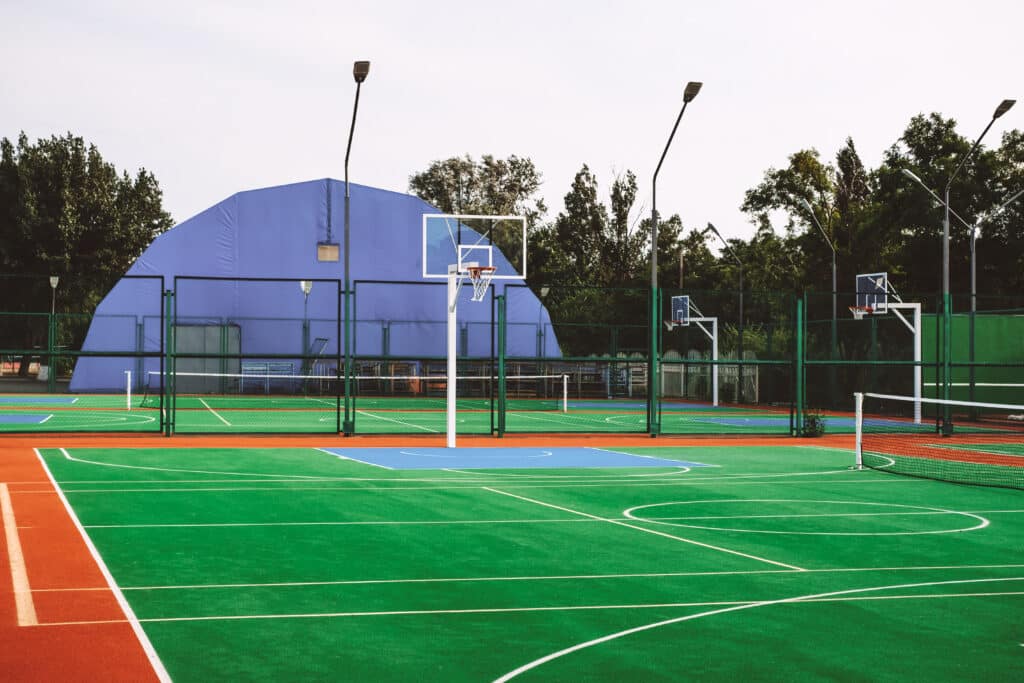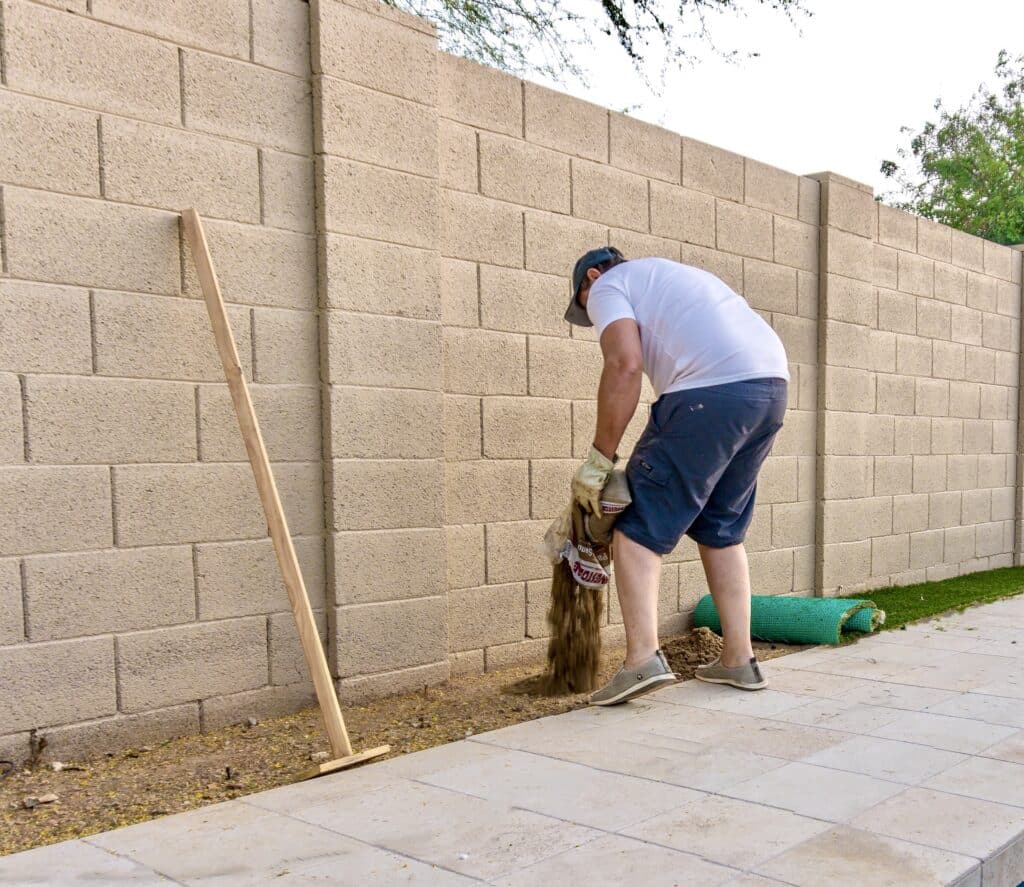Explore the pros and cons of artificial turf for your home. Make an informed decision about its benefits and drawbacks. Read the article for insights!
Is Artificial Turf Worth It?
While natural grass has long been a staple of lawns, parks, athletic fields, and commercial outdoor areas, many people are looking into artificial turf as an alternative. Synthetic lawns have come a long way and the materials used are non-toxic and can rival the look and feel of the real thing, but with far less maintenance required.
We’ll look into all of these issues, and more to see if installing artificial grass is really worth it and what you can expect.
So What Is Artificial Turf Made Of?
Before we jump into any comparisons, we need to go over the basics and explain what artificial turf is and how it’s made. There are several different components involved:
- The blades of grass – these are made from synthetic materials, mainly polyethylene, and our products are eco-friendly and contain no dangerous chemicals like heavy metals and PFAS. They have the right color and appearance and are tufted to the backing to keep them in place.
- The backing – this is the part that holds all the artificial grass fibers together, and it looks like a thin carpet. Our ProFlow backing is permeable without having lots of tiny holes that would affect durability, which helps rain and other liquids seep through to avoid puddles forming.
- The infill material – the stuff that goes in between the grass blades to provide extra structure for the fibers, add cushioning, and help it drain quicker. Depending on the specific type of synthetic grass and your needs, the material can be silica sand, crumb rubber, a mix of cork and coconut fiber, and even special anti-microbial round sand.
Exploring the Different Types of Turf
There are several options to choose from based on your needs. For example, you can choose products designed specifically for home use, commercial use, parks, and athletic fields. Here are a few details on the main categories that ProGreen offers:
- Landscape – lighter and natural looking, this option is perfect for areas with minimal foot traffic where the overall natural turf aesthetic is the most important factor.
- Residential – anything from each of the categories that someone might need for an artificial lawn in their front and backyard, perfect for high or low-traffic areas.
- Dog and pet turf – a more resilient product that can withstand endless zoomies, featuring an innovative backing that ensures easy waste cleanup and minimizes odors.
- Golf and putting greens – excellent for golfing enthusiasts, as it gives you all the characteristics of a professional golf course turf right in your yard, allowing you to practice your putting.
- Commercial – any type of grass used to create the perfect outdoor space for various commercial properties, from pet boarding and daycare facilities to apartment complexes and restaurants.
- Athletic fields – incredibly durable options for high foot traffic areas where there will be a lot of running, jumping, and sliding that also keep the playing field cool and free of mud puddles.
- Playgrounds – synthetic turf requires minimal maintenance, is resistant to heavy foot traffic and the elements, and is non-toxic, making it an excellent choice for playgrounds, both at home or at a daycare center.
As you can see, there is plenty of variety, and there is no single “artificial turf” product – it all depends on what the space will be used for and where it is located.
Pros of Using Artificial Turf
Now that we’ve gone over all the general details and the materials involved, it’s time to look at why someone would want to actually choose artificial turf alternatives to real grass. Some of the benefits include:
- Requires virtually no maintenance: you can say goodbye to regular watering, weekly trips to the shed to get the lawn mower, and planting new grass after a particularly dry season. In short, it saves you a whole bunch of time and effort on lawn care.
- Is fairly eco-friendly: not only are the materials used recyclable, but it also helps reduce water usage, which is great news for drought-prone areas. Additionally, it eliminates the need for electricity or gas for lawnmowers and reduces the use of pesticides that may contain toxic chemicals.
- Can withstand heavy use: whether it’s kids running, pets roughhousing, people playing sports, or hundreds of customers walking on it daily, it will remain in excellent condition. It’s also resistant to extreme weather, including heat, cold, rain, and wind, without showing signs of wear.
- Looks great year-round: no matter the season, your “fake grass” will look incredible, which isn’t something you can say for a traditional lawn with natural grass.
There are many advantages to these products it seems, but are there any downsides to worry about?
Cons of Using Artificial Turf
It doesn’t take much to keep your perfect lawn in pristine condition with almost no maintenance if you choose synthetic turf over real grass, but what else do you need to consider? Here are some of the potential downsides:
- Larger upfront investment: even the more basic options can be costly. However, it’s a one-time investment that will last for over a decade, saving you from ongoing maintenance costs.
- Greater heat retention: synthetic materials will retain more heat than natural grass, which can be a concern in hotter climates. That being said, ProGreen has addressed this issue by developing the CoolPlay system that uses natural infill materials to keep the temperature consistent, so you can walk on it with bare feet even in the hottest months.
- Natural Habitat Impact: there are some legitimate environmental concerns about the influence of artificial grass on the ecosystem, in particular other living plants, insects, birds, and small mammals in the area. However, small areas shouldn’t make much of an impact, and there are several ecological benefits, as mentioned, that can balance it out.
Now that we have covered all the pros and cons in some detail, let’s do a quick overview of who is better off using synthetic grass.
Ideal Uses for Artificial Turf
By now, you already understand all the different benefits and applications of these products, but let’s put it in practical terms – who is synthetic turf perfect for?
- Busy homeowners: if you have a family, a couple of kids, and a pet or two, both you and your partner will likely be too exhausted to keep natural grass in top shape. You are better off with a low-maintenance alternative that won’t get easily damaged by paws and makes it easy to deal with pet waste.
- Sports fields and play areas: artificial turf helps reduce maintenance costs, lower water bills, and keep players safe. With high foot traffic in play areas, regular grass struggles to last, making this low-maintenance option a real game-changer.
- People in drought-prone areas: water can be scarce during drought seasons, and grass uses a lot of it daily. If you’re looking for a solution that offers significant water savings, this is the answer.
- Commercial Properties: if your business sees high foot traffic and needs to maintain a polished look, synthetic turf is the perfect solution. It requires little upkeep, stands up to heavy use, and ensures your outdoor space stays attractive without the hassle of constant maintenance or watering.
What Does a Professional Installation Process Involve?
If you are considering installing synthetic turf but aren’t quite sure about how long it takes or what it looks like, here are a few key details:
- Preliminary consultation and quote – professionals arrive at your location to determine what you need and give you suggestions. You will then get a quote.
- Preparing the soil – first, any old grass and vegetation is removed, and the whole area is leveled out.
- Laying down the turf and adding infill – the turf is carefully installed to cover every inch of the space, followed by the application of infill. Finally, the entire area is inspected to ensure all the grass blades are upright and properly aligned.
- Maintenance tips to keep the turf looking great – your turf is built to last for years, but occasional maintenance is necessary. For low to medium-traffic home lawns, it may only need attention once every couple of years. However, athletic fields may require upkeep every couple of seasons, depending on usage.
Overall, the process is quick and simple.
Is Artificial Turf Worth It?
As you’ve probably noticed, the key points to consider are the overall cost, impact on the environment, and personal needs. The upfront cost is higher, but there are long-term savings.
In general, busy homeowners, especially parents, enjoy the convenience, while professionals like landscape architects like the reliability artificial solutions offer in extreme weather conditions.
Whatever your needs may be, there is a ProGreen product for you, so be sure to browse through our different product pages to learn more about your options. You can also contact us if you have any questions.


